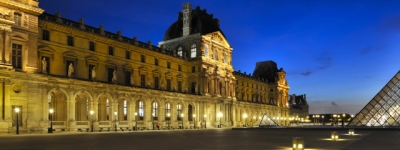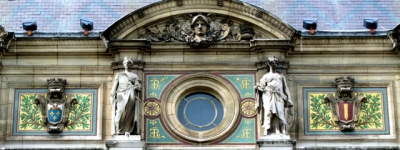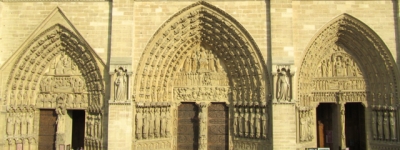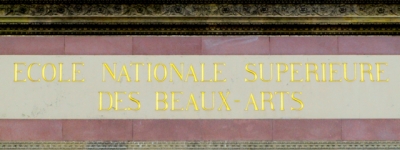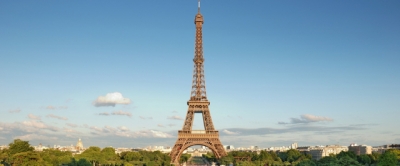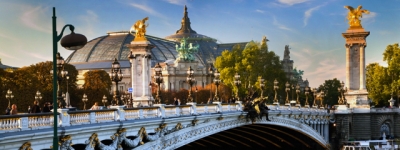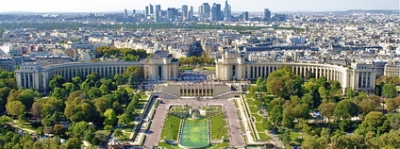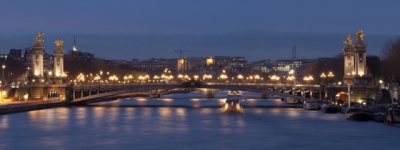World Heritage
Date of inscription: 1991
From the Louvre to the Eiffel Tower, from the Place de la Concorde to the Grand and Petit Palais, the evolution of Paris and its history can be seen from the River Seine. The Cathédrale Notre Dame de Paris and the Sainte Chapelle are architectural masterpieces, while Haussmann's wide squares and boulevards influenced late 19th- and 20th-century city planning the world over.
The choice of the zone between Pont de Sully and Pont d'léna is based on the age-old distinction between Paris upstream and Paris downstream. Upstream, beyond the Arsenal, begins Paris, the port and river transport town; downstream is the royal and subsequently aristocratic Paris, which had only limited commercial activity. It is this latter section of the city that was selected for the World Heritage List. The powerful hand of the state is extremely visible here through its constructions and the legislation in effect. It can be seen how the site and the river were gradually brought under control with the articulation of the two islets (small islands), Ile de la Cité and Ile Saint-Louis, the creation of north-south thoroughfares, installations along the river course, construction of quays, and the channeling of the river. Similarly, although the successive walls of the city have disappeared (the enceintes of Philippe-Auguste, Charles V, and the Fermiers Généraux), their traces may be read in the difference in size and spacing of the buildings: closer together in the Marais and the Ile Saint-Louis, more open after the Louvre, beyond which are a greater number of major classic constructions laid along three perpendicular axes: Palais Bourbon-Concorde-Madeleine, Invalides-Grand and Petit Palais, Champ-de-Mars-École Militaire-Palais de Chaillot. The ensemble must be regarded as a geographical and historic entity. Today it constitutes a remarkable example of urban riverside architecture, where the strata of history are harmoniously superposed.
Criteria for selection
Criterion (i) : The banks of the Seine are studded with a succession of masterpieces, including, in particular, Notre Dame and Sainte Chapelle, the Louvre, Palais de l'lnstitut, Les Invalides, Place de la Concorde, Military Academy, La Monnaie (Mint), Grand Palais des Champs Elysées, Eiffel Tower and Palais de Chaillot. A number of them, such as Notre Dame and Sainte Chapelle, were definitive references in the spread of Gothic construction, while the Place de la Concorde and the Invalides building complex exerted influence on the urban development of European capitals. The Marais and Ile Saint-Louis have coherent architectural ensembles, with highly significant examples of Parisian construction of the 17th and 18th centuries (Hôtel Lauzun and Hôtel Lambert on the Île St Louis, Quay Malaquais and Quay Voltaire).
Criterion (ii) : Haussmann's urbanism, which marks the western part of the city, inspired the construction of the great cities of the New World, in particular in Latin America. The Eiffel Tower and the Palais de Chaillot are living testimony of the great World’s Fairs, which were of such great cultural importance in the 19th and 20th centuries.
Source : Unesco / ICOMOS
History
History of Paris
From the 3rd century BC onward, the Ile de la Cité was occupied by a Celtic village of fishermen, and marked the birth of the Parisii tribe, located along the Seine River. Following the invasion of Gaul by Julius Caesar in 52 BC, it became Lutetia. The development of the city, which at the time was fortified, began on the left bank of the Seine.
In the 5th century (AD) Clovis seized Paris and made it the capital of the Frank kingdom. The following centuries were more difficult for the city. Abandoned by its inhabitants and attacked several times, it only regained its role as capital in 861 under the Capetian dynasty, under which the city regained its economic, commercial and urban development, including along the right bank of the Seine.
The following century, Philip Augustus undertook the beautification of the city (building fountains, paving streets) and more importantly its protection, developing walls and building the fortress of the Louvre. Even though there are only very few traces of these ramparts that remain, a look at a map of Paris reveals the current urban structure surrounded by the large circular boulevards that took the place of the medieval ramparts. This is also what explains the very high urban density inside this perimeter.
From this point on, the Paris that we see today began to take shape. On the Ile de la Cité, Notre Dame and Sainte Chapelle were created. The banks of the Seine became a major trading zone thanks to river access. Neighborhoods were structured: the Right Bank was occupied by tradesmen, the Left Bank by universities, making it an academic and intellectual hub. The Ile de la Cité became the seat of political and religious powers.
In the 13th century Paris was prosperous, and with its 80,000 inhabitants was the largest city in Europe at the time. Over the following centuries, epidemics, as well as the Hundred Years War, sank the city in political, economic and social instability. In the 14th century, Charles V erected new walls to protect the right bank and strengthen the fortresses of the Bastille and the Louvre from the onslaught of Englishmen. It was a waste of time; the city was occupied in 1420 and was released one hundred years later. It was not until the following century, under Francis I, that the city would return as the capital of a unified country.
He moved there in 1530 and during his reign the face of Paris was embellished. He transformed the medieval and austere Louvre into the beautiful Renaissance-style palace it is today, and he built the magnificent Hôtel de Ville (City Hall) ... The city was once again a great intellectual and cultural influence. However, though this was a prosperous period from a cultural standpoint, it remained extremely difficult from a religious point of view. The clashes between Catholics and Protestants led to the "Night of Saint Bartholomew" in 1572 when Catholics massacred the Protestant Huguenots.
Under the leadership of Henry IV the city continued its embellishment: completion of the Hôtel de Ville (City Hall) and the Pont Neuf, construction of monumental squares (Place Royale and Place Dauphine), and the extension of the Louvre and the Tuileries in particular. Gradually, aristocratic neighborhoods to the west of the city took shape. During the reign of Louis XIII, the city continued to expand, and new areas were created such as the Marais, and the Ile Saint-Louis was converted. The early 17th century was marked by the strengthening of the cultural and intellectual influence that Paris would continue to culminate in the next century under the "Enlightenment."
When Louis XIV came to power, he settled in the Saint-Germain district and then at Versailles. The city continued to grow and improve: the Louvre was once again extended, the Invalides complex was created, and gardens and new squares emerged (Place Vendome and Place des Victoires, Jardin des Tuileries). The architecture took on a decidedly classic and monumental style.
During the Enlightenment (18th century), more buildings took form, each one new and more majestic than the last (the Military Academy, the Pantheon, the Place and the Pont de la Concorde, Jardin du Palais Royal, etc). At the end of the century, the French Revolution ended in the victory of the Jacobins over the Girondins. Thus the influence of central government was strongly felt by the population, and it was the prefect who directly administered its authority. Under Napoleon the city did not have a mayor and it wasn’t until two centuries later, in 1977, that one would be elected at the head of the capital (Jacques Chirac).
Faced with a massive rural exodus, the population of the capital doubled in the first half of the 19th century. Popular unrest grew strongly until 1848 when a rebellion was severely repressed. Under Napoleon III, Paris developed the architectural configuration and urban structure that is visible today. The modernization of the city was entrusted to Georges Haussmann, who pierced the famous luxurious tree-lined avenues and stone façades, forever destroying the old medieval town. Reorganizing the cityscape, he created squares and gardens that aerated the city center. New monuments adorned the squares and avenues (Théâtre du Châtelet, Palais Garnier, etc).
The Royal Empire ended following the Franco-Prussian war of 1870. The insurrection of the Commune the following year ended in destruction by fire of many buildings (Hôtel de Ville and the Tuileries in particular). The Third Republic was then proclaimed. The city was then reunited and peaceful, and the end of the 19th century would be marked by the World’s Fair of 1889, which introduced the Eiffel Tower to the world for the first time, and the World’s Fair of 1900 which introduced the Grand and the Petit Palais.
The 20th century confirmed the artistic and cultural supremacy of Paris, attracting the biggest names in art and literature from all over Europe. The Palais de Chaillot and Tokyo were built, and many neighborhoods were restored. The different presidents of the Fifth French Republic made their mark, in their own way, on the monuments and buildings of the city. Georges Pompidou left the cultural center that bears his name; Valery Giscard d'Estaing, the Musée d'Orsay and the Science Museum; François Mitterrand the Louvre Pyramid, the Bastille Opera House, the National Library and the new arch at la Défense.
Tourist Office
Paris Tourist Office
Paris Tourist Office
29 Rue de Rivoli,
75004 Paris
Metro stations : Hôtel de Ville (line 1) or Châtelet (line 4)
Website - Tel : 01 49 52 42 63
Open daily. November through April : 10 a.m. to 7 p.m. May through October : 9 a.m. to 7 p.m.
Information about handicap accessibility and specialized tours available. A certified ‘‘Tourism and Handicap’’ location.
Paris Tourist Office branches
Tourist Information Le Louvre
Carroussel du Louvre, 99 Rue de Rivoli, 75001 Paris
Open every day: 10 a.m. to 8 p.m. On Tuesday from 11 a.m.
Gare du Nord
18 Rue de Dunkerque, 75010 Paris
Open every day: 8:30 a.m. to 6 p.m.
Tips for visitors in Paris
Paris Museum Pass
Website.
Price : pass for 2 / 4 / 6 days: €48 / €62 / €74. Other options available.
The Paris Museum Pass allows visitors unlimited access to most of the museums and monuments in Paris, as well as Versailles and Fontainebleau, and allows passholders to skip entrance lines.
Museums are free for citizens of EU member countries who are under 26 years old (or under 18 years old for other countries). They are also free for everyone the first Sunday of each month (some dates and attractions excluded).
Paris Passlib'
More comprehensive passport which includes the Paris Museum Pass and many other tips (transportation, cruise, excursion) and many discounts. From €40.
Events
Main events of the year in Paris
Fashion week
www.modeaparis.com
« The Throne Fair » (carnival games and activities) (end of March to end of May)
www.foiredutrone.com
Paris Marathon (April)
www.parismarathon.com
Paris Expo (end of April to beginning of May)
www.foiredeparis.com
The French Open – Rolland Garros (end of May to beginning of June)
www.rolandgarros.com
Gay Pride Parade (end of June)
www.gaypride.fr
Paris Jazz Festival (June and July)
www.parisjazzfestival.fr
National Music Day (June 21st)
Bastille Day Parade, July 14th on the Champs Elysées
Cyclists’ arrival at the Tour de France finish line (end of July), on the Champs Elysées
Paris Beach (July and August)
www.paris.fr
Heritage Days (September)
www.journeesdupatrimoine.culture.fr
The All-Nighter (city-wide party from dusk until dawn)
www.paris.fr
FIAC (International Contemporary Art Expo) in October
www.fiac.com
New Year’s Eve
City-wide activities (music, food, midnight countdown) from the Champs-Elysées to the Eiffel Tower
Outdoor markets of Paris
Baudoyer Market
Place Baudoyer, 75004 Paris
Wednesday: 12:30 p.m. to 8:30 p.m., Saturday: 7 a.m. to 3 p.m.
Located a stone's throw from the Town Hall and on the edge of the Marais, the Baudoyer food market is the first of the Parisian markets to open in the afternoon. The fifteen or so traders offer quality products: fish, market garden products and cream, poultry, flowers...
Aguesseau Market
Place de la Madeleine, 75008 Paris
Tuesday and Friday: 7 a.m. to 2:30 p.m.
The Aguesseau market is a small food market located on Place de la Madeleine. We come here for its fruits and vegetables, its fish and shellfish and its pork butcher.
Maubert Market
Place Maubert, 75005 Paris
Metro station : Maubert-Mutualité
Tuesday and Thursday from 7 a.m. to 2 :30 p.m. ; Saturday from 7 a.m. to 3 p.m.
Flower market
Île de la Cité,
Place Louis Lépine, 75004 Paris
Metro station : Cité
Daily, from 8 a.m. to 7:30 p.m.
Transport
Getting to Paris
By plane
Paris-Charles de Gaulle Airport (Roissy)
Website - Tel : 39 50
23 km north of Paris via highway A1
Connections to Paris city center
Le Bus Direct (schuttle)
Website - tel : 01 64 02 50 14. Buses every 30 minutes
Price: One-way / Round-trip : €18 / €31.
Line 2 : service to Eiffel Tower and Arc de Triomphe.
Line 4 : service to Montparnasse train station (Metro station : Montparnasse-Bienvenue) and Lyon train station (Metro station : Gare de Lyon)
Roissybus
Service to Garnier Opera House (Metro station : Opéra) every 15 to 20 minutes. Price : €12.50
RATP (city buses)
Line 350 : service to Gare de l’Est (Metro station : Gare de l’Est) every 20 to 30 minutes. Price : €6
Line 351 : service to Place de la Nation (Metro station : Nation) every 30 minutes. Price : €6
Night buses : service to Gare de l’Est every hour between 12 a.m. and 4 :30 a.m. Price: €7.60
By train
ADP (Paris airports) RER B (time : around 30 minutes).
Service to city center locations: Châtelet-Les Halles, Saint-Michel-Notre-Dame, Luxembourg, Port-Royal
Price : around €11,40.
By taxi : expect to pay a minimum of €40 for a one-way trip.
Paris-Orly Airport
Website - tel : 39 50
14 km south of Paris via highway A6.
Connections to Paris city center
Le Bus Direct (schuttle)
Website - tel : 01 64 02 50 14. Buses every 20 minutes
Price : One-way/Round-trip : €12 / €20.
Line 1 : service to Montparnasse train station (Metro station : Montparnasse-Bienvenue), Invalides (Metro station : Invalides) and Etoile/Champs-Elysées (Metro station : Charles de Gaulle-Etoile)
Orlybus
Service to Place Denfert-Rochereau (Metro station : Denfert-Rochereau) every 15 to 20 minutes.
Price: €8.70.
By train
OrlyVal and RER B (time : around 45 minutes)
Service to : Port-Royal, Luxembourg, Saint-Michel-Notre-Dame, Châtelet-Les Halles (and others)
Full price : €13.25
By taxi : expect to pay a minimum of €30 for a one-way trip.
Paris-Beauvais Airport (BVA)
Airport specializing in lower-cost flights
Website. Tel : 08 92 68 20 66
1 hour from Paris via highway A16.
By bus : special connection between Beauvais/Paris and Porte Maillot, at the Metro station Porte de Maillot.
By car
Arriving in Paris by car is relatively simple: depending on your departure city, you will arrive at one of the 30 entrances which mark the 35 kilometers of highway encircling Paris. Then, depending on your destination (neighborhood, landmark or monument), you will have the choice between the inner loop (traffic flows clockwise) and the outer loop (traffic flows counter-clockwise).
Nearby World Heritage sites
(the travel times indicated are estimations and may change based on traffic in and around Paris)
Versailles: 22 km (13.5 mi), time : 40 minutes
Fontainebleau : 70 km (43 mi), time : 1 hour, 5 minutes
Provins : 90 km (56 mi), time: 1 hour, 30 minutes
Chartres Cathedral: 92 km (57 mi), time: 1 hour, 20 minutes
Reims Cathedral: 145 km (90 mi), time: 1 hour, 45 minutes
By train
Website. Tel : 36 35
Gare du Nord
18, rue de Dunkerque, 75010 Paris
Metro : lines 2 (station : La Chapelle), 4 and 5
Gare de l’Est
Place du 11 novembre 1918, 75010 Paris
Metro : lines 4, 5 and 7
Gare de Lyon
Place Louis-Armand, 75012 Paris
Metro : lines 1 and 14
Gare d’Austerlitz
55 Quai d'Austerlitz, 75013 Paris
Metro : lines 5 and 10
Gare Montparnasse
17 Boulevard Vaugirard, 75015 Paris
Metro : lines 4, 6, 12 and 13
Gare Saint-Lazare
13 Rue d'Amsterdam, 75008 Paris
Metro : lines 3, 9 (station : Havre-Caumartin), 12, 13 and 14
Getting around Paris
By Metro
Website
Price : €1.90/trip.
This is the easiest and fastest way to get around the capital. Operates from 6 a.m. until 12:30 a.m. (until 2 a.m. on Fridays and Saturdays).
By bus
Website
The city bus lines are numerous and pass through the center, along the banks of the Seine, through the historic districts, etc.
Passes and discounts for public transport
There are different packages and discounts if you want to use the public transport mentioned above. Children under 4 years ride free, and those between 4 and 9 or 11 years old ride for half price.
Mobilis is a daily transport pass for unlimited travel. Pricing begins at €7.50 per day and depends on the transport zones included.
Paris Visite is a transport pass for 1, 2, 3 or 5 days. Price depends on transport zones included.
On foot
Paris is best experienced on foot, and allows visitors to take the time to encounter the city’s inhabitants, its mysteries and its history.
Cycling or Rollerblading
In addition to the 300 kilometers of bike paths, 70 kilometers of bus lanes are open to cyclists. On Sundays and holidays, a part of the quays of the Seine and the channels are reserved for pedestrians, cyclists and rollerbladers.
Vélib (self-service bike rental)
Website
Price for 30 minutes: €1. Payment by credit card at terminals
Self-service bicycle rental provided by the city of Paris. More than 8,500 Vélib bicycles are freely available at many stations around the city (map available at the tourist office) to cover the 371-kilometer urban cycling network in Paris. Be careful, the first 30 minutes are included in the price but if you keep your bike longer you will have to pay extra. You can download the App "Vélib" on App Store and Google Play.
By boat
2 possibilities: boats with a guided tour, or the Batobus that crosses the Seine. It’s without a doubt the best way to get from one monument to another while enjoying the beauty of the buildings and quays.
Batobus
Port de la Bourdonnais,
75007 Paris
Website. Tel : 08 25 05 01 01
Runs from late March to the beginning of January
Price : pass for 1 / 2 days : €17 / €19. Reduced prices for children.
These packages are good for an unlimited number of trips during the selected period.
The Batobus is a shuttle boat that allows you to cruise (uncommented) on the Seine, and to get on and off at 9 different stops: the Eiffel Tower, The Invalides, Musée d'Orsay, Saint-Germain-des Pres, Notre-Dame Cathedral, Jardin des Plantes, Hôtel de Ville, Louvre, Champs-Elysees.
By taxi
470 taxi stations around the city. A single phone number to contact for taxi availability: 01 45 30 30 30.
Parking
www.parkingsdeparis.com
Sleeping / Eating
Hôtels in Paris
The selections for accommodation are listed by district and geographical location to reflect the circuit you are considering within the classified area. All are located inside the classified area or close by (never more than 400 meters away). The selection of accommodation proposed below consists of establishments that offer quality services at competitive rates, they are considered as references in their respective categories. The prices shown are for the off season, based on 2 people.
1st District
Hôtel Britannique ***
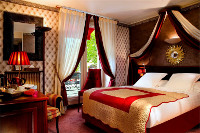
20 Avenue Victoria, 75001 Paris
Website - Tel: 01 42 33 74 59
Room from €170.
Hotel Britannique will enchant you with its exceptional location in the heart of historic centre of Paris. The air-conditioned rooms offer your dreams a charming decor in the intimate and refined atmosphere of an exclusive home.
4th District
Hôtel de la Bretonnerie ***
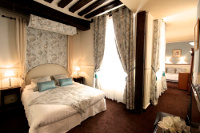
22 Rue Sainte Croix de la Bretonnerie, 75004 Paris
Metro: Hôtel de Ville
Website - Tel: 01 48 87 77 63.
Room from €120.
On the right bank, in one of the most famous districts of Paris: Le Marais, the Hotel de la Bretonnerie is a charming 3 star hotel, located a few steps away from the touristic places. Best Rate Guaranteed if you book on the website.
5th District
Hôtel Les Rives de Notre-Dame ****

15 Quai Saint Michel, 75005 Paris
Website – Tel: 01 43 54 81 16.
Room from €159 to €329.
In the romantic heart of Paris, in the Latin Quarter, and facing Notre Dame.
With only 10 delightful rooms in perfect Parisian style, services and unmatched comfort. A truly exclusive stay in a 4-star hotel in Paris !
6th District
Relais Christine *****
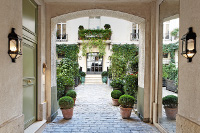
3 Rue Christine, 75006 Paris
Website - Tel: 01 40 51 60 80.
Metro: Saint Michel.
Room from €350.
A few steps from Notre-Dame, this luxury boutique hotel is a haven of peace. You will appreciate its warm rooms and suites, the exclusivity of its private garden and the charm of its spa.
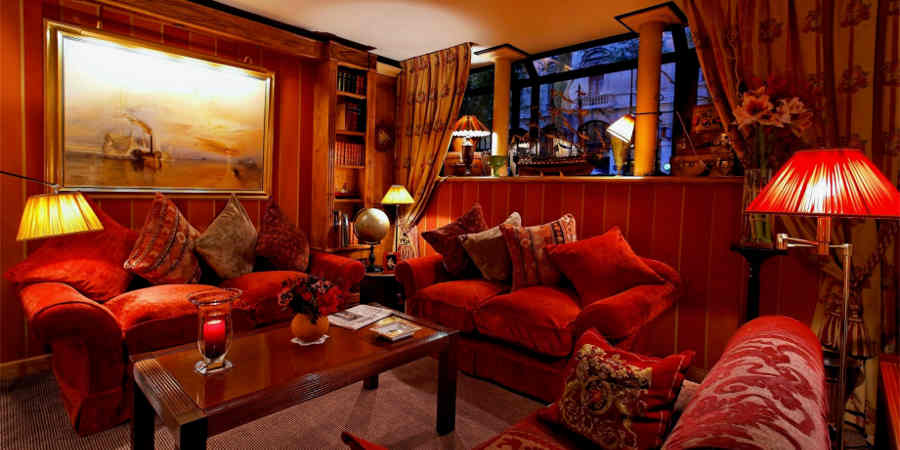
Restaurants in Paris
The selection of restaurants proposed below consists of restaurants that offer a good price/quality value. These addresses are inside the classified area. “Formule” corresponds to a lunch special with a starter and a main course, or a main course and a dessert. The “menus” usually consist of a starter, a main course and a dessert," for lunch or dinner.
1st District
Café des Abattoirs - Wine bar and meat
10 Rue Gomboust, 75001 Paris
Website - Tel: 01 76 21 77 60.
Métro : Pyramides.
"Menu" from €32.
La Régalade Saint-Honoré - semi-gourmet cuisine
106 Rue Saint-Honoré, 75001 Paris
Website - Tel : 01 42 21 92 40.
Metro : Louvre-Rivoli.
"Menu" €41.
L’Ardoise - inventive cuisine
28 Rue du Mont Thabor, 75001 Paris
Website - tel : 01 42 96 28 18.
Metro : Concorde ou Tuileries.
"Menu" €38.
La Tour Montlhéry-Chez Denise - bistrot cuisine
5 Rue des Prouvaires, 75001 Paris
Tel: 01 42 36 21 82.
Métro : Louvre-Rivoli.
Main course around €25.
Yam'Tcha - Asian cuisine
121 Rue Saint-Honoré, 75001 Paris
Website - Tel: 01 40 26 08 07.
Métro : Louvre-Rivoli.
"Lunch menu" €70. "Dinner menu" €150.
Le Grand Véfour - Gourmet cuisine
17 Rue de Beaujolais, 75001 Paris
Website - Tel: 01 42 96 56 27.
Métro : Pyramides.
"Lunch menu" €115.
4th District
Benoît - local cuisine
20 Rue Saint-Martin, 75004 Paris
Website - tel : 01 58 00 22 05.
Metro : Châtelet ou Hôtel de Ville.
"Lunch menu" €39. Full meal price around €100.
Vins des Pyrénées - french cuisine
25 Rue Beautreillis, 75004 Paris
Website - Tel: 01 42 72 64 94.
Métro : Saint Paul
Main course around €25.
Bofinger - Traditional cuisine
5 Rue de la Bastille, 75004 Paris
Website - Tel: 01 42 72 87 82.
Métro : Bastille.
"Formule" €26. "Menu" from €33.
5th District
Kokoro - French cuisine and Tea room
36 Rue des Boulangers, 75005 Paris
Tel: 01 44 07 13 29.
Métro : Cardinal Lemoine.
"Lunch formule" €20. "Dinner menu" €34.
Les Papilles - Bistrot cuisine
30 Rue Gay-Lussac, 75005 Paris
Website - Tel: 01 43 25 20 79.
Métro : Maubert-Mutualité.
"Lunch formule" €28. "Dinner menu" from €35.
Sola - french mixed with japanese cuisine
12 Rue de l'Hôtel Colbert, 75005 Paris
Website - Tel: 01 42 02 39 24.
Métro : Maubert-Mutualité.
"Lunch menu" €48. "Dinner menu" €98.
La Tour d’Argent - gourmet cuisine
15 Quai de la Tournelle, 75005 Paris
Website - tel : 01 43 54 23 31.
Metro : Mont Marie or Cardinal Lemoine
"Lunch formule" : €105.
Reservation highly recommended.
6th District
Le Procope - French cuisine
13 Rue de l'Ancienne Comédie, 75006 Paris
Website - Tel: 01 40 46 79 00.
Métro : Odéon.
"Lunch formule" €21.90. "Dinner formule €31.50.
Café Trama - Bistrot cuisine
83 Rue du Cherche-Midi, 75006 Paris
Tel: 01 45 48 33 71.
Métro : Sèvres-Babylone
Around €40.
Ze Kitchen Galerie - inventive cuisine with asian influences
4 Rue des Grands Augustins, 75006 Paris
Website - tel : 01 44 32 00 32.
Metro : Saint Michel.
"Lunch formule" from €41. "Dinner menu" from €85.
KGB - asian-inspired cuisine
25 Rue des Grands Augustins, 75006 Paris
Website - tel : 01 46 33 00 85.
Metro : Saint Michel.
"Lunch formule" from €29. "Dinner menu" from €55.
This is the annex of Ze Kitchen Galerie.
Semilla - creative cuisine
54 Rue de Seine, 75006 Paris
Tel: 01 43 54 34 50.
Métro : Mabillon ou Saint Germain des Prés
"Lunch formule" €24. "Dinner menu" €66.
Fish, la Boissonnerie - wine bar
69 Rue de Seine, 75006 Paris
Tel : 01 43 54 34 69.
Metro : Mabillon.
"Lunch formule" from €17. "Dinner menu" €41.
Atelier Vivanda - meat
20 Rue du Cherche-Midi, 75006 Paris
Website - Tel: 01 45 44 50 44.
Métro : Sèvres-Babylone
"Lunch formule" €24.
La Marlotte - French cuisine
55 Rue du Cherche-Midi, 75006 Paris
Website - Tel: 01 45 48 86 79.
Métro : Sèvres-Babylone.
"Lunch formule" from €23.50. "Dinner menu" €34.
Le Comptoir du Relais - french cuisine
9 Carrefour de l'Odéon, 75006 Paris
Tel: 01 44 27 07 97.
Métro : Odéon
"Lunch Formule" €29.
Hélène Darroze - gourmet cuisine
4 Rue d'Assas, 75006 Paris
Website - Tel: 01 42 22 00 11.
Métro : Sèvres-Babylone.
"Lunch menu" €58. "Dinner menu" from €135.
7th District
Le Clos des Gourmets - seasonal cuisine
16 Avenue Rapp, 75007 Paris
Website - Tel: 01 45 51 75 61.
Métro : Alma-Marceau.
"Lunch menu" €29.90. "Dinner menu" from €35.
Le Violon d'Ingres - gourmet cuisine
135 Rue Saint Dominique, 75007 Paris
Website - Tel: 01 45 55 15 05.
Métro : Ecole Militaire.
"Lunch formule" €49. "Dinner menu" €140.
Café Constant - inventive bistro cuisine
139 Rue Saint-Dominique, 75007 Paris
Website - tel : 01 47 53 73 34.
Metro : Ecole Militaire.
"Lunch formule" €21. "Menu" €37.
La Fontaine de Mars - cuisine from southwest of France
129, Rue Saint-Dominique
, 75007 Paris
Website - tel : 01 47 05 46 44.
Metro : Ecole Militaire.
Main course around €28.
D’chez Eux - generous traditional cuisine
2 Avenue Lowendal, 75007 Paris
Website - tel : 01 47 05 52 55.
Metro : Ecole Militaire.
"Lunch formule" €29. For dinner, full meal price around €70.
Le Jules Verne - gourmet cuisine
Tour Eiffel, 5 Avenue Anatole France, Champs de Mars, 75007 Paris
Website - tel : 01 45 55 61 44.
Metro : Bir Hakeim ou Trocadéro
"Lunch menu" for the week : €105. "Dinner menu" from €190.
Reservation highly recommended.
David Toutain - Gourmet cuisine
29 Rue Surcouf, 75007 Paris
Website - Tel: 01 45 50 11 10.
Métro : Invalides.
"Lunch menu" €60. "Dinner menu" from €120.
Thoumieux, restaurant Sylvestre Wahid - gourmet cuisine
79 Rue Saint Dominique, 75007 Paris
Website - Tel: 01 47 05 79 00.
Métro : Ecole Militaire.
"Lunch menu" €85. "Dinner menu" from €175.
Les Cocottes - seasonal cuisine cooked in casseroles
135 Rue Saint-Dominique, 75007 Paris
Website - tel : 01 45 50 10 31.
Metro : Ecole Militaire.
Casserole from €17. "Lunch Formule" €23. "Menu" €35.
8th District
Mini Palais - seasonal cuisine with fresh produce
Grand Palais, 3 Avenue Winston Churchill, 75008 Paris
Website - tel : 01 42 56 42 42.
Metro : Champs-Elysées Clémenceau
Main course around €25. Full meal price around €50.







